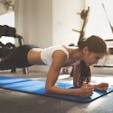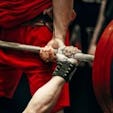In one of life’s funny ironic twists, you’ve got two legs, but you spend most of your time using one or the other. When you think about it, running is done with one leg at a time. So is most jumping and bounding, as well as turning and cutting. Even walking to your mailbox requires alternating legs to stabilize the body and exert force. For these reasons, you absolutely MUST train unilaterally—one leg at a time. And one of the best exercises to choose is the single-leg deadlift done with a kettlebell.
Benefits Of Using Kettlebells To Work Out Your Legs
(See 00:44 in the video above)
“Kettlebells are easier to manage than barbells and plates,” says Shane Heins, Onnit’s Director of Fitness Education. If you don’t have access to a gym, or you need to train in hotel rooms due to frequent travel, the kettlebell is the more practical option than conventional free weights. Furthermore, you don’t need a wide array of poundages to get a good workout for any body part. One 16-kilo kettlebell can make for a pretty grueling routine.
The shape and design of the kettlebell allows you to move it in ways that can’t be done with other implements. This means you can train your legs while holding the weight aloft, in front of you, while rotating, and otherwise moving in multiple planes in order to get a unique training effect that prepares you for the movements you’ll make in everyday life and sports. The offset load, however, is what made kettlebells famous. “The bell’s center of gravity is set at a distance from its handle,” says Heins, meaning that you’ll have to work much harder to control the weight than you would with a dumbbell. That raises the stakes on every exercise you do, increasing the benefit to your stability and overall body control.
Why And How To Do The Single-Leg Kettlebell Deadlift
(See 01:27 in the video)
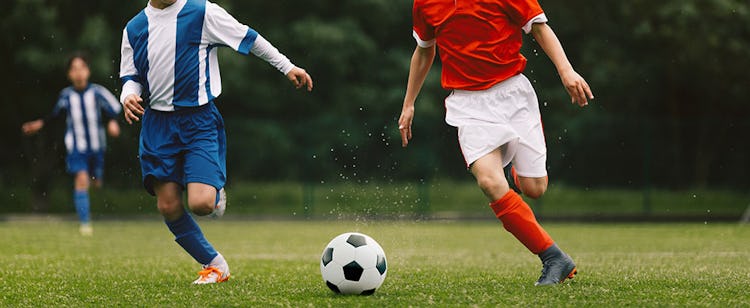
“Just because we have a greater sense of evenness when standing on two legs doesn’t mean both sides are doing their part evenly,” says Heins. Everyone has strength imbalances between sides, and while you’ll probably never smooth them out completely, it’s worth it to at least try to minimize the discrepancy. The single-leg deadlift strengthens the glutes, hamstrings, and adductors in each leg in turn, while improving your balance and body control on one leg. Single-leg training also lets you work through a greater range of motion, and that helps with mobility. All of these things are important for preventing injury, as lopsided strength and mobility between limbs can set you up for accidents. You’ll also find that when each leg works better on its own, the two will come together to produce more force on your bilateral exercises, such as conventional deadlifts and back squats.
Here’s how to perform the single-leg kettlebell deadlift with good form.
Step 1. Hold a kettlebell with both hands at arm‘s length in front of you. Retract and depress your shoulders—think: “proud chest.” Now stand with feet hip-width apart and pick your left foot up off the floor an inch or two (just high enough so it doesn’t scrape the floor when you begin your reps).
Step 2. Soften your right knee so there’s a slight bend, and begin pushing your hips straight back as if to touch a wall behind you. This motion is called a hip hinge, and it’s the same type of movement you’d perform in any deadlift variation.
Step 3. Push your left leg back and straighten it as you hinge at the hips, and try to keep the leg moving in a straight line, as if you were aiming to touch a target that was directly behind you. If you have trouble balancing, you can gently tap your left foot to the floor as you go, but try to keep it elevated. The left leg will serve as a sort of kickstand that supports you while you train the right leg.
Keep a long spine from your head to your tailbone as you bend your hips—don’t let your back round forward. Stop when you feel a good stretch in your right glutes and hamstrings.
Step 4. Extend your hips to come back up to standing tall, touch your foot down to reset, and repeat for reps. Afterward, switch legs and do your reps on the left leg.
Heins says to grip the floor with your foot as much as possible. (If possible, do the exercise in socks or bare feet so you can make better use of your toes). “Your weight should shift to your heel as you hinge,” says Heins. “Push your foot into the floor, and that will create stability up the chain.” Also, avoid twisting your hips and shoulders to either side. Strive to keep both square to the floor at all times.
Single-Leg Kettlebell Deadlift Alternatives
If you’re fairly new to lifting or don’t have a lot of single-leg work under your belt, your biggest challenge may be keeping your balance. In this case, try what Heins calls the sliding single-leg deadlift, where you’ll rely more on the kickstand leg to provide stability.
Sliding Single-Leg Deadlift
Step 1. Set up as you did for the single-leg deadlift but keep the toes of your left foot on the floor and raise your heel.
Step 2. Now bend your hips back and slide your left foot gently along the floor. Maintain contact with the floor throughout the set so you keep balance.
If even the sliding single-leg deadlift feels like a high-wire act, regress the movement one step further to the staggered-stance deadlift (also called a B-stance deadlift). All you have to do is split your legs and hinge the hips. The staggered stance takes a lot of balance out of the equation but still allows you to emphasize one leg over the other, so you get the benefits of unilateral training.
Staggered-Stance Deadlift
Step 1. Stand with your left foot a bit behind the right one so your left toes are in line with your right heel.
Step 2. Perform your hip hinge as normal, using the left leg only to maintain balance.
Yet another option is to hold the kettlebell at your chest rather than at arm’s length. By keeping the weight closer to your body, you’ll have better control of it and can focus almost exclusively on the deadlift motion itself. “The chest-held single-leg deadlift is a good way to instigate sitting back deeper into your hinge,” says Heins.
Chest-Held Single-Leg Deadlift
Step 1. You know the drill… Do any of the single-leg deadlift movements described above but with the bottom of the kettlebell held tight to your sternum and your chest proud.
Sample Kettlebell Leg Workout
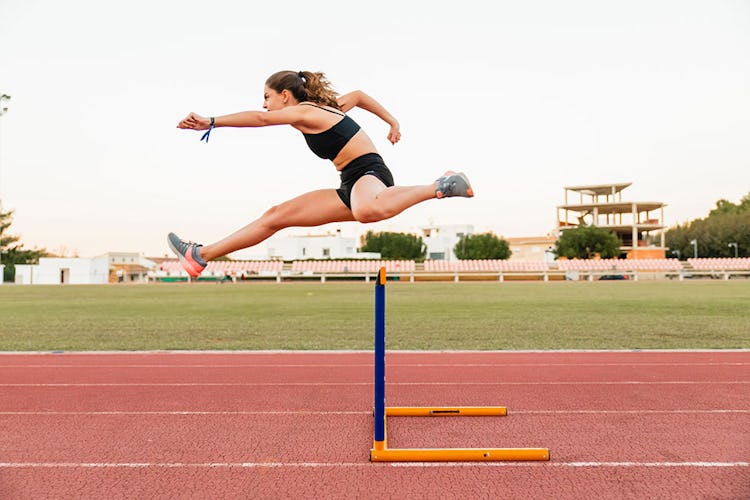
Here’s a workout that incorporates the single-leg deadlift with other movements that build strong, balanced, and muscular legs.
DIRECTIONS
Perform the exercises as a circuit, completing one set of each in sequence without rest in between. Afterward, rest 2 minutes, and repeat the circuit for 3–5 total rounds.
1. Single-Leg Deadlift (Any Variation of the Above)
Reps: 10 (each side)
2. Kneeling Leg Extension
Reps: 5–10
Step 1. Get on your knees and hold a light kettlebell at chest level. Flatten the top of your feet into the floor. (You may want to put a towel or mat under you to protect your knees.)
Step 2. Keeping your hips locked out, SLOWLY bend your knees, allowing yourself to fall backward under control until you feel a big stretch in your quads. Stop before you lose control of the movement, and extend your knees to come back up.
Not only is this a challenging exercise, but it can be hard on your knees and quads if you’re not warmed up, so ease into this slowly after you’ve done a thorough warmup (see the video below!).
3. Single-Rack High-Knee March
Reps: 10 (each side)
Step 1. Hold the kettlebell in your right hand at shoulder level and stand with feet hip-distance apart.
Step 2. Drive your right foot into the floor while you raise your left knee up as high as you can. Lower it, and repeat on the other leg. After 10 reps, switch the kettlebell to your left hand.
4. Modified Sumo Squat To Figure-Four
Reps: 3 (each side)
Step 1. Stand with feet shoulder-width apart and turn your toes out as far as you can. Hold the kettlebell with both hands in front of your chest.
Step 2. Squat as deeply as you can, pushing your knees out as you descend. Keep your chest facing forward and maintain a long spine from your head to your tailbone—don’t let your pelvis tuck under (stop short of where it does).
Step 3. Extend your hips and knees to stand up tall again and then turn your body to your left, raise your right leg in front of you, and rest it against your left leg in a figure-four position. Depending on your mobility, you can rest the leg above the knee or against your shin—either is fine.
Release the right leg, return to the modified sumo stance, squat, and repeat the figure-four on the other side.
How To Stretch Your Legs Before Working Out
Perform the following mobility routine from Onnit-certified coach Eric Leija (@primal.swoledier) before you take on the workout above. It will stretch out your hips, glutes, and hamstrings for the work to come, and raise your core temperature for safer training.
How Often Should You Train Your legs?
(See 12:28 in the Single-Leg Kettlebell Deadlift video)
You can perform the workout outlined above three days per week on non-consecutive days. Heins says you could do it Monday, Wednesday, and Friday, and perform your upper-body work on Tuesday, Thursday, and Saturday.
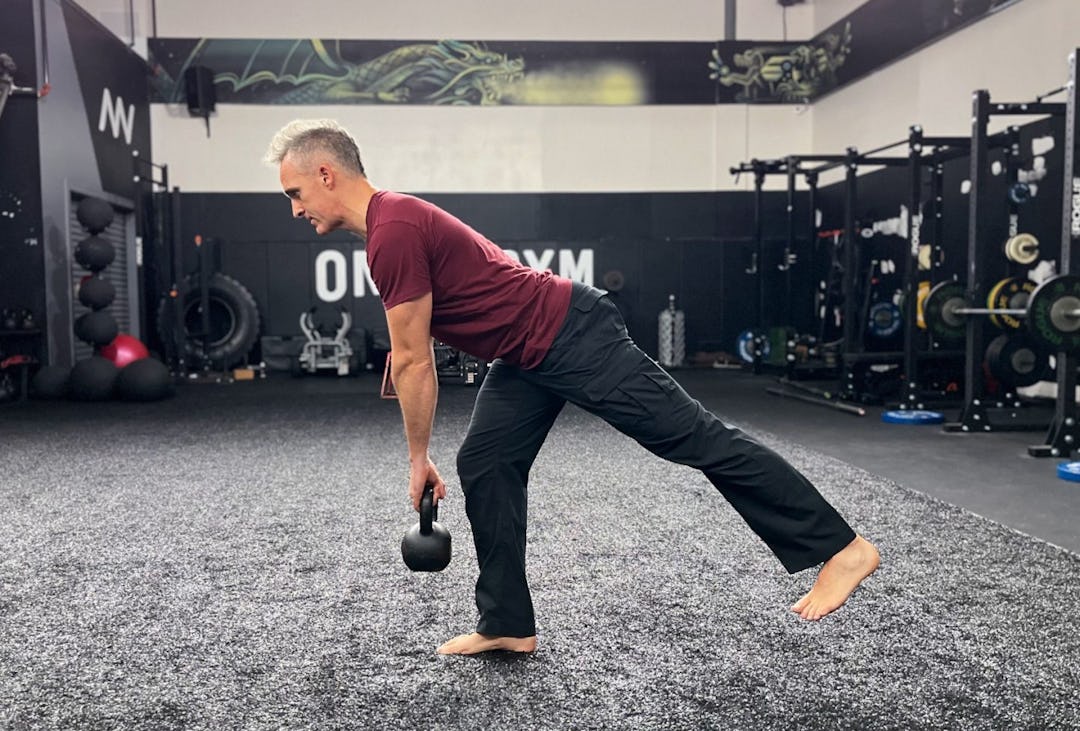
)

